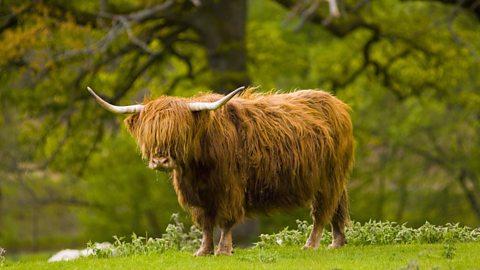Selective breeding
Humans have bred food crops from wild plants and domesticated animals for thousands of years.
selective breedingAn artificial process in which organisms with desired characteristics are chosen as parents for the next generation. is when humans breed plants and animals for particular genetic characteristics so that they are different to their actual wild ancestors and are now beneficial to humans.
Darwin wondered if a similar process could happen naturally to produce new species through natural selection. In selective breeding characteristics are chosen by humans rather than the environment, so it is sometimes called artificial selection.
Main steps involved
Selective breeding takes place over many generations. The main steps for both plants and animals involve:
- Decide which characteristics are important enough to select.
- Choose parents that show these characteristics from a mixed population. They are bred together.
- Choose the offspring with the desired characteristics. Breed these together to produce the next generation.
- Repeat the process continuously over many generations, until all offspring show the desired characteristics.
The new varieties may be economically important. For example, they may provide more or better quality food, or allow farmers to feed more people. Farmers selectively breed different types of cows in order to produce the best meat and dairy products.

Image caption, The traditional Highland cow
Image caption, Fresian cows have been bred to produce large volumes of milk
Image caption, Aberdeen Angus cows have also been bred for their meat
1 of 3
A wide range of characteristics can be chosen for usefulness or appearance.
Desired characteristics in plants:
- disease resistance in food crops
- wheat plants that produce lots of grain
- large or unusual flowers
Desired characteristics in animals:
- animals that produce lots of milk or meat
- chickens that lay large eggs
- domestic dogs that have a gentle nature
Benefits and risks of selective breeding
selective breedingAn artificial process in which organisms with desired characteristics are chosen as parents for the next generation. leads to future generations of selectively bred plants and animals, all sharing very similar allelesDifferent forms of the same gene. which will reduce variation. Genes and their different alleles within a population are known as its gene poolGenes and alleles that exist within a population. inbreedingBreeding animals that are closely related. It can reduce the range of alleles in a gene pool and lead to disease and inherited defects. can lead to a reduced range of alleles in the gene pool, making it more difficult to produce new varieties in the future. It also makes organisms prone to certain diseases or inherited defects.
Benefits of selective breeding
- New varieties may be economically important, by producing more or better quality food, for example, larger tomatoes or drought resistant crops.
- Animals can be selected that cannot cause harm, for example, cattle without horns.
Risks of selective breeding
- Reduced genetic variation can lead to attack by specific insects or disease, which could be extremely destructive.
- Unknowingly selecting for rare disease genes when selecting for another a positive trait, leading to problems with specific organisms, for example, a high percentage of Dalmatian dogs are deaf.
- Creating physical problems in specific organisms, for example, large dogs can have faulty hips due to the hips not forming correctly.